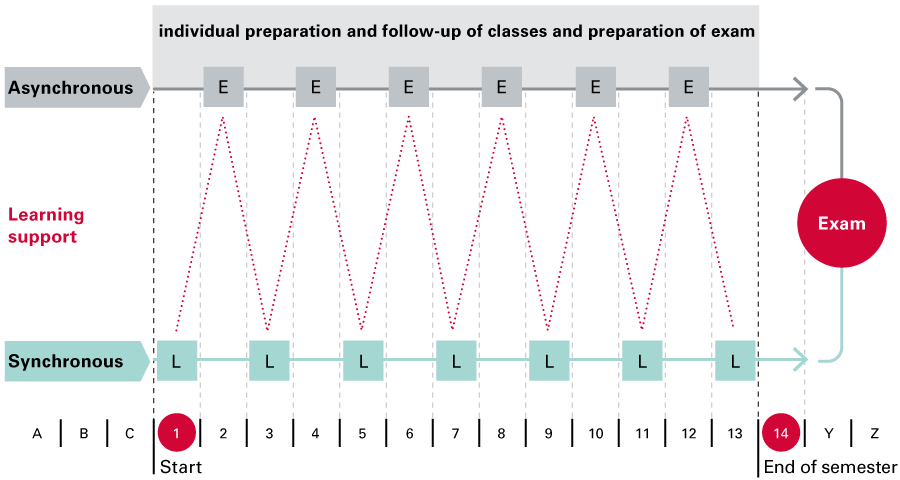INTEGRATIONSKONZEPT
4.3
Visualization of the integration concept
When planning your semester, it helps to visualize the integration concept as part of a semester overview. Download the semester overview grid to visualize your classes.
The following figure visualizes an integration concept, taking a traditional lecture with exercises as an example:
 E = Exercise, L = Lecture
E = Exercise, L = Lecture
- Based on a timeline of 14 weeks in the semester (start of semester in week 1, end of semester in week 14), the various elements of the synchronous and asynchronous phases are arranged as blocks of time.
- New skills are traditionally taught during the synchronous phase (L for “lecture”, whether in a physical, hybrid or virtual classroom; see Chapter 7).
- The exercises (E) are held asynchronously as part of guided independent study (ongoing testing via exercise sheets, formative tests, group work, etc., see Chapter 6).
- To avoid exceeding the overall workload announced for the synchronous and asynchronous elements, in-person classes should be held every other week only.
- Students can then practice the content taught in the class and deepen their knowledge in the accompanying exercises. These exercises are overseen by the lecturer and/or assistants (red line: “learning support”).
- Learning material (e.g. presentation slides, literature list) and a link to a recording of the class (audio or video) will be made available to students for preparation purposes or as a follow-up to the class.
- A final summative examination can take place in addition to the formative methods as required.
